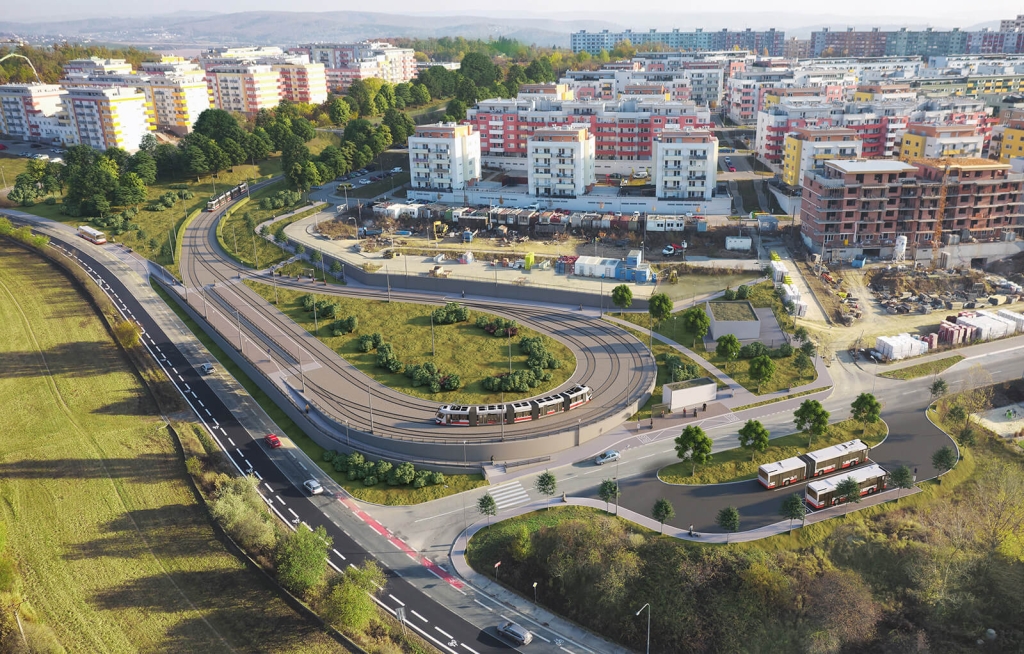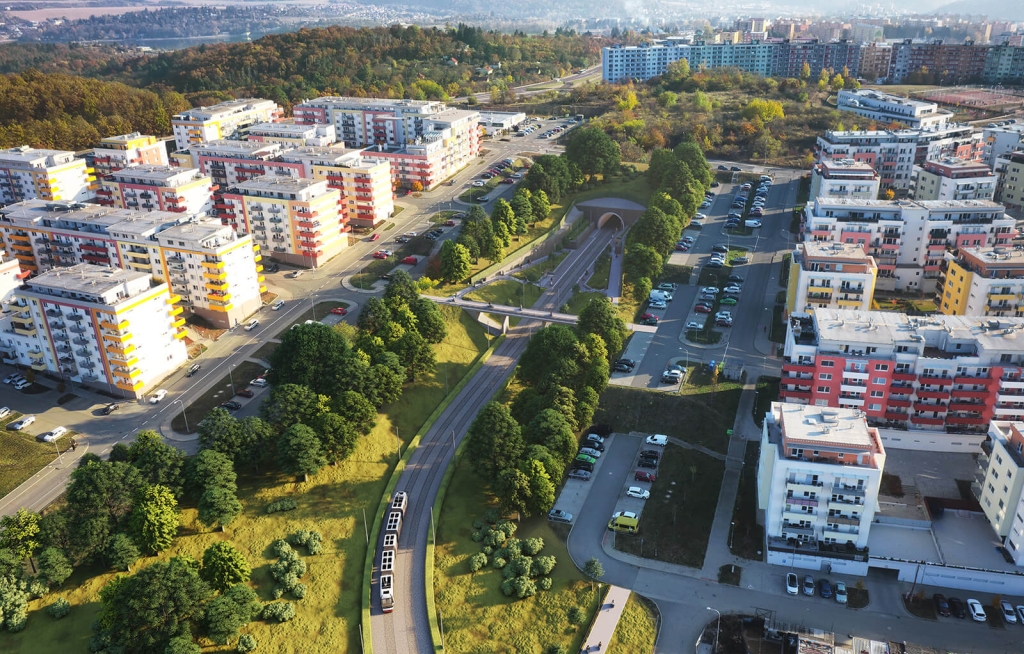The tram line leading to Bystrc ends at the Ečerova stop. Soon, however, it will go almost one and a half kilometres further. This will satisfy the needs of hundreds of residents from the Kamechy housing estate who travel daily from the outskirts of Brno to its centre.
Dynamically developing locations often have the same problem: poor transport links. This is only built ex post, when the area is already built up with houses, between which it is not easy to provide the necessary services. It usually takes some time before the whole problem is solved. In the meantime, the inhabitants of the area prefer to use their cars, but they are likely to end up in a traffic jam anyway. And they do not do the environment any favours either. Those who use public transport take buses, which are slower, less environmentally friendly and smaller in capacity than trams.
The examples so far gradually lead to lessons. For example, the tram stop Západní brána is already in operation in front of the University of Bohunice campus. There is nothing standing around it yet, but major construction is planned for the future. When it starts, there will be no need to make a circuitous connection to public transport. However, there are still localities in Brno that lack better transport connections despite the high population density.


This problem also concerns the Kamechy housing estate on the border of the Bystrc and Žebětín districts. This is an area on the outskirts of Brno, whose inhabitants have to change to a bus during the tram journey from the city centre, which is not comfortable. However, the extension of the tram line to Bystrc by 1,400 metres will provide them with convenience and time savings. Three stops and a 320-metre long tunnel will be built on the new section, thanks to which the noise from traffic will not bother the residents living nearby.
After the extension of the line, this location will be served primarily by tram lines 1 and 3, which will offer sufficient capacity and short intervals without the need to change trams. Line 1 will run at the current interval, line 3 will continue to terminate at Rakovecká, with approximately half of the connections going to Kamechy. Passengers who are now accustomed to changing connections will save five to eight minutes on their journey. This will speed up transport and promote sustainable mobility, and the deployment of new, more modern trains can be expected.
The population of Kamechy has increased sharply in just a few years. While in 2011 there were 500 inhabitants, in the following ten years this number more than tripled and exceeded 4,200 inhabitants. This is also linked to the rapid increase in housing. However, more people living in the area means more pressure not only on transport services but also on the availability of other services. Funds from the ITI tool have already supported, for example, the construction of a six-class kindergarten.
In December 2024, the project contractor was selected, namely a consortium of companies TT Bystrc – Kamechy EUROVIA + TuCon + Marti Tunnel. Construction of the line began in February 2025, with the first passengers expected to travel on it in December 2027. The entire project will cost CZK 2.5 billion – this amount will be partially covered by the subsidy from the ITI tool, with the amount of CZK 1.8 billion. This is one of the largest transport projects in the history of Brno’s public transport system. The project will also focus on nature and environmental protection. All trees that need to be removed for construction will be replaced with new greenery. The city plans to plant over 800 trees and more than 3,500 shrubs.
Register your e-mail address to receive regular updates from the Brno Metropolitan Area.